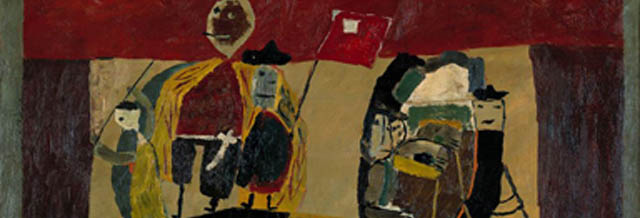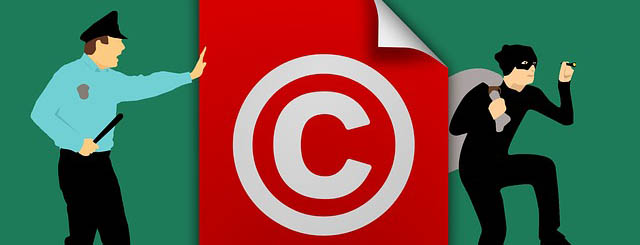Text version: Artwork Images: Resolution, Quality, Pixels, DPI - What to do?
What about all my artwork photos online? How not to loose your intellectual property.
Since the beginning of the internet and the ability to showcase artwork via this medium there has always been the question about intellectual property and ownership. In the late 1990's artists and art galleries readily embraced the opportunities of promoting their art via the internet but museums and really famous artists were definitely not as eager to embrace the new communications medium at that time.

I remember, in the mid 1990's, I curated a large exhibition of Roy Lichentstein's Pre-Pop artwork. I published the entire exhibition with low-res images on the Internet and promptly received calls from Lichtenstein's lawyers to remove the images from the web. I am still thinking that the quality of his early works of which many were created during his tenure at The Ohio State University may have had something to do with it. I am not really a fan of his early work but an active involvement with his children and their bubble gum comics and wrappers surely had an influence on his pop-period. And guess what? The lawyers were claiming that I was stealing intellectual property and how could I dare to publish such material on the early Internet. How times have changed some twenty plus years later.
During the 1990's and early 2000's museums were deathly afraid of having their artwork collections published on the Internet. At that time museums feared that they would loose control over their collections, that they would loose their actual visitors to virtual ones and that they would loose money. Museums have finally embraced the medium and have been actively participating in promoting exhibitions and artist artworks via the Internet.

Artists always ask me what about their artwork images. I always hear, I am afraid people are going to steal them and reprint them and make money from the stolen images. If you approach it correctly and know what you are doing you really don't have anything to worry about. I am going to show you what to do and we will all be able to sleep well at the end.
The honest truth is that any image that has been published at a website can be grabbed and a copy can be saved. Technically as soon as it shows up in your browser window a copy has already been made
and you can often save it easily with a right mouse click. There are ways to make it more difficult, but the truth is "if it's on the web you can grab it". It's as simple as that.
Now, what you want to do is be as informed as possible before you upload images to any website so you know what you are doing and not shooting in the dark. Here are a couple of concepts that will point you into the right direction.
First of all when you take a photo of your artwork you can often decide what quality you want the image to be. If you have a half way decent camera you can control all of that. Take the time to read up on it and learn how to change these settings. It may not seem right to you but you always want to take the best/highest quality/resolution photograph possible. The simple reason is that you want to have a high quality copy of your artwork later on, and this could mean 20 years down the road not just next month. Imagine that you have a retrospective exhibition at a museum or gallery 25 years from now and you don't have any quality photographs of all your older works. What are you going to do then? Twenty years from now many of your earlier works will have been sold or even disappeared. Artworks get lost over time and you want that photographic record, right?

So, while I am at it I am going to preach to you to make sure that you photograph every artwork you create so you have a good record of all your works. Don't be a flighty artist but document your work now and document it often! You also want to make sure that you store all your photographs not just on your computer at home, but in the cloud like absolutearts.com. There are many services like "Dropbox" that are very affordable. You can also upload it to your artist portfolio at absolutearts.com and we do store high resolution images in safe locations. We often get frantic calls from artists - "My computer hard drive has crashed, do you have a copy of all my artwork images?". You can't imagine all the happy smilies we get when we tell them that we have a copy! But, 20 images are not many so a midlevel or premiere account is definitely a better choice for you.
Ok, back to images - quality - resolution - size - DPI all that good stuff that you do need to know about. The basic rule is that the lower the resolution/DPI (dots per inch) and the smaller the size in terms of pixels (width and height) the less likely the image is going to get "stolen". Images that are displayed on a webpage should be at about 72 DPI and anything for printing should be 150+ DPI. Many traditional printers still use the 300 DPI threshold for quality printing and if you want to print large, let's say around 6 feet wide you will need a very, very high resolution image. Many places that do giclees or t-shirts, bags, mugs, pillow cases, wall hangings, window blinds, etc. are happy with 150+ DPI but the larger you print the fuzzier it's going to get unless you uploaded an image that is 4000 X 4000 pixels or even 8000 X 8000 and then you can use it for a lot more purposes.

Of course all websites have their requirements for sizes as well. Social media like Twitter is different from Facebook or Instagram. You should never upload images that are larger than 72DPI to social media. You should read some of those sites' policies and a while back I remember reading that some take ownership of all the content including the images you uploaded and state that they can use them any way they wanted to. Scary, right? So, at absolutearts.com image files larger than 30MB (file size) are currently not supported. I am sure we will increase it as time goes on and cameras get better and better and space gets cheaper. We do encourage our artists to upload their images at 300DPI so that we can store them safely in a secure area and you can later on sign up for the print on demand section and your images will be ready to go without having to upload them again. We suggest that images are a minimum of 2000 pixels wide or 2000 pixels high with a max size of 4000 X 4000 pixels. We resize the original image to several different sizes and then that's what gets displayed to visitors. Some of you will say that's not necessary but as technology changes years down the road the image will have a longer life span than a smaller one and you will never rephotograph every single artwork anyway. Also remember many of your works will no longer be in your possession but you still hold the copyright for them unless you explicitly signed it over to a new owner and you can use them however you want. Yes, you can print something of medium quality if the image is larger than 1500 pixels wide, but honestly it's highly unlikely that you are going to be the victim of a nefarious thief and find your artwork at a box store for $29.99.

Some artists want to upload their images with a big watermark right through the middle of the image. Yes, you can do that, but I can tell you from decades of experience that not one original painting with a big watermark through the middle of the image ever sold via absolutearts in the last 20 years. Clients don't like watermarks and they always say how they distract from the quality of the artwork. If they don't like the watermark they will look at another artist within seconds - another potential sale lost. If you follow the rule of 72DPI you will be in good hands. Some websites do it with their domain name/website address right through the middle of the image "to protect artists"; complete humbug! They do it to market their website via every possible artwork image there is because they know it will end up in google image index. We definitely discourage it. So, you decide what is best for you.
Now that you pulled out your camera, ready to take some good photos of your latest creation you notice that images are very large when saved. Some are 20mb others are even 50+ mb. That's too large for most sites to accept (absolutearts accepts up to 30mb). It's all good and not a big problem. That's when you change the sizes of the image file later on with an image manipulation program on your computer or device. Yes, it takes time to do that but it's worth it in the end. There are plenty of free programs to do this with from "
Gimp" to "
Photoshop Express" to
online sites that will do it for you. Just download one of them, if you don't use one already, and watch some short YouTube tutorials on how to use them and how to resize images. It's all pretty much the same and you can easily get the hang of it. Learn to do it yourself and don't rely on others.
So, our final answer is: 72 DPI for web and 150 DPI+ for printing, less than 1500 pixels wide if you cannot trust the site and meta data that includes your name for copyright included in the image. Take the time to take high quality photographs and store them securely. Make it part of your routine, it will make life a lot easier further down the road!
Good luck!
About Markus Kruse - BFA, MA, PhD
Markus, founder & owner of absolutearts.com started his art career at a gallery in the early 1980's in Berlin, Germany. Since then he has actively participated in the art world: worked with thousands of contemporary artists all over the world; curated exhibitions for years; directed several art galleries; organized many artshows; sold thousands of artworks; taught college for a while and has applied his in depth knowledge and expertise to further the online art world. He has always shared his expertise and helped artists further their artistic careers. Interested in getting ahead - take advantage of our private consulting sessions?





